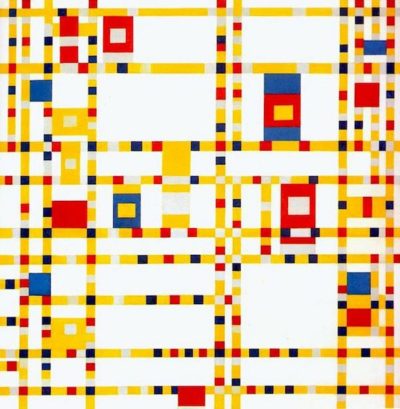Beginnings are hard. In advocacy work (as in life), sometimes it’s difficult to know where to start.
Looking at Piet Mondrian’s Broadway Boogie Woogie, painted after Mondrian moved to New York in 1940, one sees a grid representing the dynamics of a fast-moving city. To me, the patterns of color and shape offer endless possible routes, multiple starting points, and no definite destination or ending. Looking at the painting as a metaphor for navigating a city (and advocacy work), the feeling can be both exciting and overwhelming.
 My advice: Just jump in.
My advice: Just jump in.
But first, a word about the “A” word.
Advocacy is defined as the act or process of supporting a cause or proposal.
Advocacy may be a Big “A” or a Small “a” effort. Whether the cause is narrowly focused or broad, the underlying process is the same.
We all advocate every day—for ourselves and others in the workplace, for our children at school, for our community by supporting causes and candidates. So how did “advocacy” become such a scary word? Perhaps in our zeal to move arts education conversations to centers of power and influence, advocacy has become synonymous with lobbying (more on that later), to the point of scaring off future advocates, um, supporters. Try not to let the word deter you.
STEP 1. Start from where you are. Really.
Here are examples expressed to me over the years:
- I’m a parent who has learned my child’s school doesn’t have a robust arts program. What do I do?
- I’m a music teacher who struggles to secure instruments and equipment for all students.
- I’m a principal whose hands are tied when it comes to flexible scheduling that would enable arts participation.
- I’m a nonprofit arts provider who wants to partner with schools.
- I’m a corporate partner who wants to help but doesn’t know what would be most effective.
- I represent a professional association, and I want the arts to have greater voice in education policy decisions.
Each example represents individuals who understand the value of arts education and believe it is essential to the education of all students. By the way, I assume you agree with that premise, and that’s why you are reading this blog. So, while I will not be spending a lot of time convincing you that arts education is important, I will be happy to point you to relevant research that will help you make the case to others.
STEP 2. Identify like-minded individuals who want the same things you do.
If the arts education field has learned anything over the past 40 years, it’s that we cannot do this work alone. The power of the individual is mighty—in raising a concern, driving an idea, mounting a campaign and keeping forward momentum. That said, this work is done most effectively as a collective effort with a common cause.
Find like-minded colleagues who may be asking the same questions. And as you expand your network, look for diversity—in age, gender, ethnicity, work sector and demographics. (More about a diversity of voices in a later blog.)
STEP 3. Learn more about your cause from a variety of perspectives. Be curious. Find out what others have tried, what worked (or not), and why.
For example, the nonprofit provider looking for partnership opportunities with a school may want to:
- Join with other similar organizations in the area to learn more about their experience.
- Contact a local arts council or commission for more information about partnerships and promising practices.
- Contact a school administrator to learn more about school policies and procedures.
- Contact a teacher to learn more about what they want/need.
- Research effective arts partnerships across the state/region/nationally.
STEP 4. Write a personal purpose statement.
A purpose statement may be a simple “note to self.” It may be narrowly focused or wider in scope. Write it down; the very act of writing will help to clarify your thinking.
Knowledge building
- I seek to learn more about effective practices in this area.
- I want to learn what others think about this issue.
- I seek to understand the policies that govern arts learning in my school district/state/country.
Capacity building
- I want to identify others who are interested in this issue.
- I want to see if my colleagues have an appetite to engage in this work.
- I want to increase the visibility of my student’s work.
Effecting systems change
- I want to work with others to develop and implement a plan to effect change in this area.
STEP 5. Set goals. What are you hoping to achieve?
Again, your goal does not have to be a big, hairy, audacious one. An effective (doable) goal may actually be a series of incremental goals, with measurable outcomes.
Knowledge building
- As a parent who wants to know more about the arts in my child’s school, I commit to identifying and speaking to at least six people over the next three months.
- As a teacher who wants to secure more instruments for my students, I commit to identifying and contacting at least three potential sources of funding or in-kind support.
Capacity building
- As a nonprofit provider, I commit to convening a knowledge sharing event with other school and community partners.
- As a corporate partner, I commit to creating opportunities to showcase student art.
Effecting systems change
- As a professional association, I commit to joining with constituents to learn more about opportunities for action.
Now back to Mondrian’s Broadway Boogie Woogie— if you’re still with me, thanks for navigating the twists and turns of this post. If you want to know what comes between Boogie and Woogie, stay tuned. Lots more to come….






